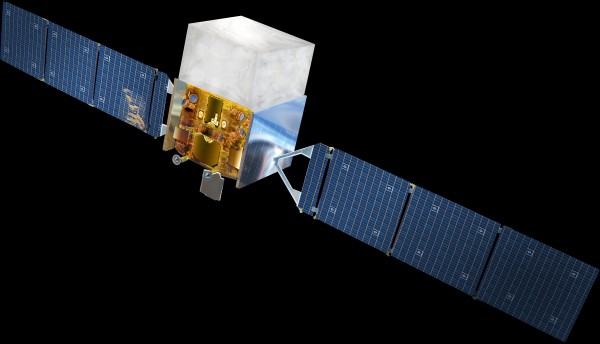|
Fermi Gama-ray Telescope:
The Fermi Gamma-ray Space
Telescope (FGST), formerly
called the Gamma-ray Large Area
Space Telescope (GLAST), is a
space observatory being used to
perform gamma-ray astronomy
observations from low Earth
orbit. Its main instrument is
the Large Area Telescope (LAT),
with which astronomers mostly
intend to perform an all-sky
survey studying astrophysical
and cosmological phenomena such
as active galactic nuclei,
pulsars, other high-energy
sources and dark matter. Another
instrument aboard Fermi, the
Gamma-ray Burst Monitor (GBM;
formerly GLAST Burst Monitor),
is being used to study gamma-ray
bursts.

Fermi was launched in 2008.
The mission is a joint venture
of NASA, the United States
Department of Energy, and
government agencies in France,
Germany, Italy, Japan, and
Sweden, becoming the most
sensitive gamma-ray telescope on
orbit.
Many new possibilities and
discoveries are anticipated to
emerge from this single mission
and greatly expand our view of
the Universe, including:
-
Neutron stars; [The study of]
younger, more energetic pulsars
in the Milky Way than ever
before so as to broaden our
understanding of stars. Study
the pulsed emissions of
magnetospheres so as to possibly
solve how they are produced.
Study how pulsars generate winds
of interstellar particles.
-
Fundamental physics; Test
better than ever before certain
established theories of physics,
such as whether the speed of
light in vacuum remains constant
regardless of wavelength.
Einstein's general theory of
relativity contends that it
does, yet some models in quantum
mechanics and quantum gravity
predict that it may not. Search
for gamma rays emanating from
former black holes that once
exploded, providing yet another
potential step toward the
unification of quantum mechanics
and general relativity.
Determine whether photons
naturally split into smaller
photons, as predicted by quantum
mechanics and already achieved
under controlled, man-made
experimental conditions.
-
Unknown discoveries;
Scientists estimate a very high
possibility for new scientific
discoveries, even revolutionary
discoveries, emerging from this
single mission.
 The
Einstein@Home webpage regarding
the 'Fermi Gamma-ray Pulsar
Search' has a lot more
information and answers the
following questions: The
Einstein@Home webpage regarding
the 'Fermi Gamma-ray Pulsar
Search' has a lot more
information and answers the
following questions:
-
What is a neutron star?
-
What is a pulsar?
-
Why are some pulsars visible
in radio waves and others in
gamma rays?
-
What kind of data is used by
Einstein@Home?
-
Why is it so hard to find
gamma-ray pulsars?
-
What is new about the
Einstein@Home search for
gamma-ray pulsars?
-
Why is it so difficult to
find gamma-ray pulsars in binary
systems?
-
How does Einstein@Home search
for gamma-ray pulsars in binary
systems?
-
What happens when your
computer discovers a pulsar?
[Click
here to find the answers]
|